I’ve never been an outdoorsy type. I don’t like mosquitoes or low-flying birds or wet socks. I do not embrace the glory of physical endeavor. So, it may come as a surprise that my first installment in “The Weird and The Wonderful” is Romeyn Hough’s American Woods.
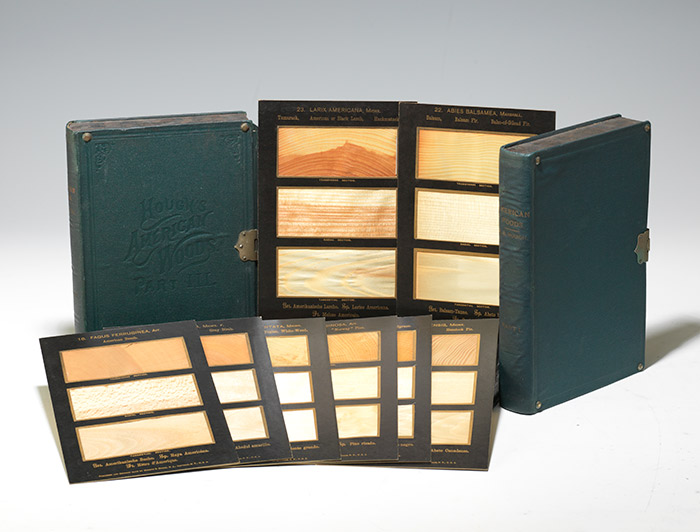
Romeyn Beck Hough (pronounced “Huff”) was one of the leading botanists of his day. After training as a physician at Cornell, he abandoned medicine and set out on a career in forest botany. This path placed him squarely in the footsteps of his father, Franklin Hough, “The Father of American Forestry,” with whom he had spent a happy childhood traipsing through the outdoors (apparently devoid of sock issues).
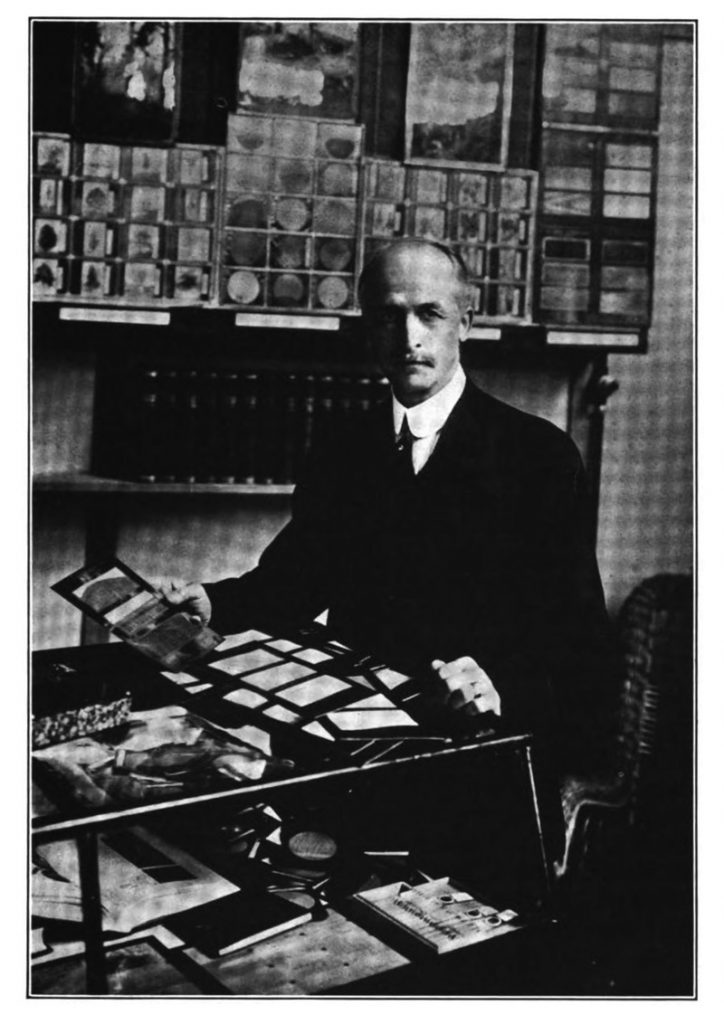
Credit: California’s Magazine, circa 1916.
The 19th century was the great age of natural history. Of course, natural scientists had always existed–certainly even well before Pliny the Elder and his encyclopedic Natural History. However, the 19th century marked the first time that technology and science were truly in sync. Scientific societies flourished on both sides of the Atlantic. Explorers and gentleman travelers brought back specimens from their adventures. New areas of study like evolution emerged and a cascade of scientific discovery and publication ensued. Natural historians such as Audubon and Darwin became not just revered scientists but also household names. Romeyn Hough was determined to join them.
Hough’s first step was technological: he patented a machine capable of cutting razor-thin wood veneers in three directions: transverse, radial, and tangential. His initial impulse was commercial. The wooden cards were so thin that they could be used as projection slides in Magic Lanterns. (One imagines that this was the height of at-home entertainment at the time.) Moreover, the tranverse sections were so strong that they could also be used as business and greeting cards. For just 10 cents ($1.00 today), customers could buy individual wooden cards to use for whatever purpose they wished. Hough’s innovation in veneer-cutting proved a massive commercial success.
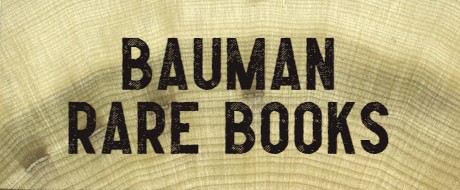
Using Hough’s Tulipwood Veneer.
Fortunately for the world of book collecting, Hough was not prepared to stop there. After encountering German botanist Hermann von Nördlinger’s 11-volume work on European tree sections, Hough that an American version was in order. His plan was ambitious: a 15-volume set featuring veneers from every American tree (or, as even his prospectus admitted, “at least the most important.”)
A native New Yorker, Hough devoted Volume I of his masterpiece to the trees of New York. In 1883, when he began his work, the trees of New York were rapidly disappearing, with only about 25% of the native forests remaining. Logging was a thriving industry and construction was booming throughout New York and neighboring states. Today’s remaining forests are largely a product of a committed reforestation program in which a select variety of trees were planted in grids. Accordingly, Volume I of American Woods serves as a time capsule, capturing forests already in the process of disappearing with many tree varieties now endangered or lost altogether.
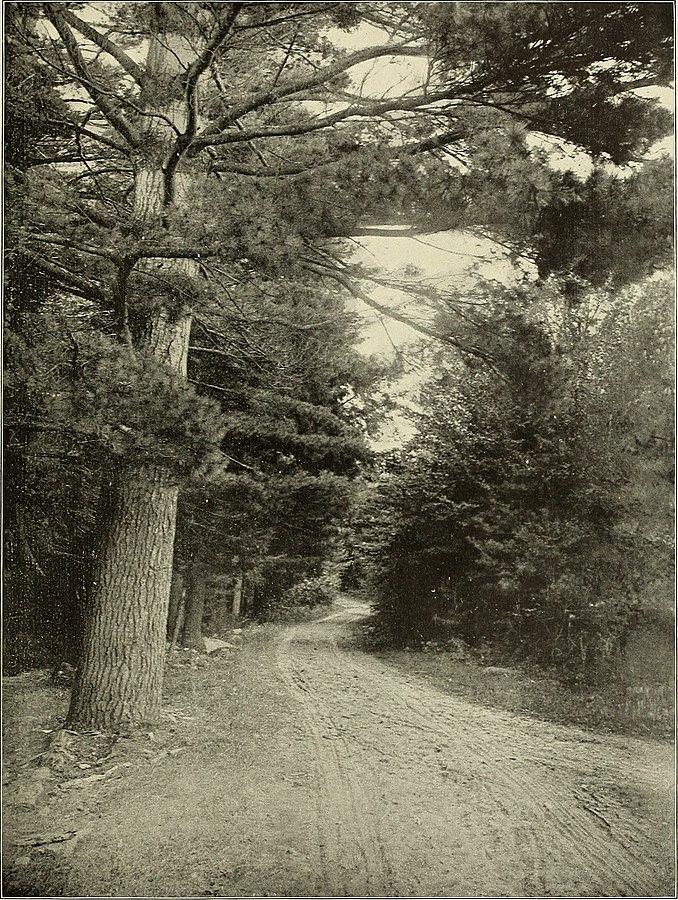
Ultimately, Hough only completed 13 volumes, still managing to incorporate a breathtaking variety of American trees. He died in 1923, leaving his daughter to produce a final 14th volume comprising tree veneers and her own field notes. Hough (with his daughter’s help) delivered a remarkable achievement in natural history. American Woods is arguably the finest and most beautiful American forestry work.
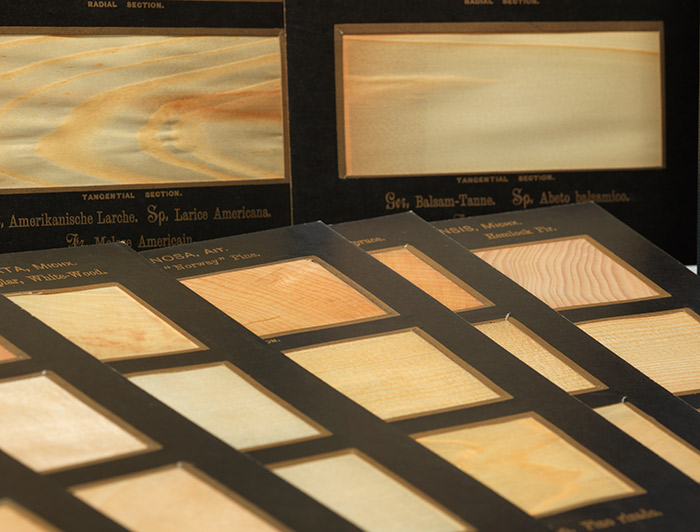
Yet, for the collector, American Woods has unique appeal–appeal that requires neither a deep love of nature nor a passion for entertaining slideshows. Complete sets of American Woods are vanishingly rare, especially outside of institutions. Stafleu & Cowan’s Taxonomic Literature, a leading botanical bibliography, lists the set as complete at six volumes. While book collecting today is such that, given book knowledge and sufficient finances, one can compile a respectable library in a matter of days, American Woods resists all but the most dogged collector. At Bauman Rare Books, we can start you out with the first three volumes–each rare and desirable on its own. Bringing together all fourteen volumes can be the work–the passion–of a lifetime, a challenge to match Hough’s own.

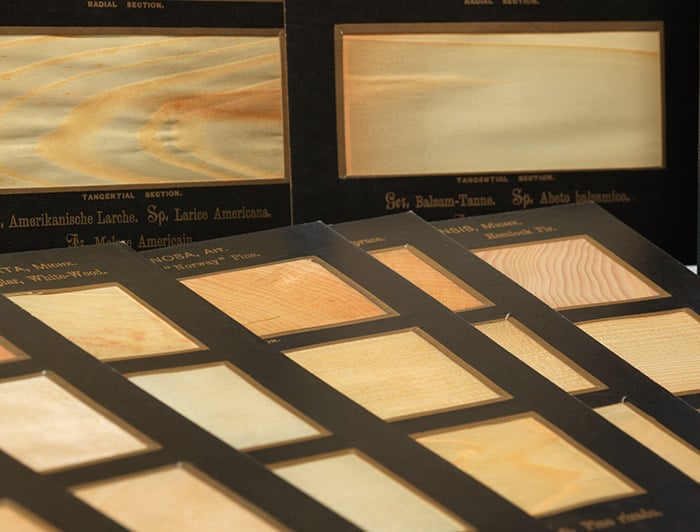

Comments
One Response to “The Weird and The Wonderful:
Romeyn Hough’s American Woods”
Kathy Schiff says: September 6, 2021 at 2:55 pm
Thank you for this article. You fill in much information for me after discovering this extraordinary volume of books.